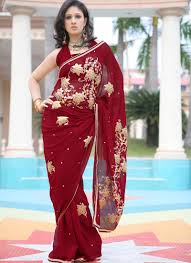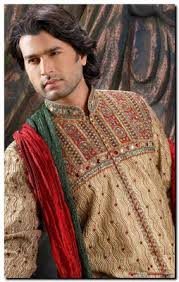Phil here with an editorial note: the lyrics above are from the Beatles' Mother Nature's Son. This song was written while the Beatles were in India and were inspired by a lecture given by the Maharishi Mahesh Yogi. Since, as you will see, this blog entry is kinda of a potpourri of things Indian, it seemed like a fitting title. Sort of. Anyway, here's Rae.
My part of this week’s blog will be a bit rambling, but I have some
random pictures that I want to share and I think they might help to paint a
picture of some of the different sites and things I’ve experienced. These pictures make up part of what I feel is
interesting, amazing and sometimes strange.
A lot of what I see as we drive around is hard to capture from a moving
car, but I will try to explain some of what I’m not able to get pictures of.
These are some pictures that we took while out at the resort we went to
for girls’ camp. The first picture is of
some of the places some of the workers and their families live. I always feel a bit strange taking a picture
of people’s homes if they are by them so this particular one was just one type
of houses. This one as you can see is
mostly made up of tarp type roofs and walls.
I tried to get a picture of some that seemed to be patched together with
pieces of tin, wood and a bit of whatever, but it didn't turn out. The next two are of some of the women who
were working there on the grounds. I find it fascinating that these women work
in saris. They do all kinds of manual
labor in these lovely colored saris and they never seem to look dirty or disheveled. One picture is of them removing grass and
weeds along a path. The other is of them
collecting and bundling the grass after it’s been mowed. I have also seen women working along the road
as walls are being built and they are carrying pallets of mortar or mixing
mortar. They always look so colorful. Being a person with crumby knees, I’m also
amazed at the way they can crouch down and just sit like that for so long. I wouldn't be able to walk if I had to sit
like that.
I think we mentioned that there was a Hindu holiday last week. I had our driver pick me up and take me to
have lunch with Phil. The traffic was
considerably more congested that usual.
I took a few pictures along the way.
These two are of a cute little family who were willing to let me take
their picture. I thought her sari was so
pretty.
I’m always captivated by the women dressed in the beautiful saris,
riding side saddle and holding a child or two. In this picture you will see that there are 4
riding on the motorcycle. Also, you’ll
notice that this women has her entire head veiled. I think this is a Hindu
practice that is practiced in western India and this type of veil is called a
Ghoonghat or a Laaj. Right after I got
this picture a family of five passed by on their motorcycle. There were 2 children in front of the father
and one between the father and mother.
I’m always amazed at how many people you can cram into a car or truck
or bus. I know this picture doesn’t show
clearly how many people are in this small white car just beyond the motorcycle,
so, you’ll have to trust me when I tell you there were 8 people inside. The driver is on the right, with a passenger
on the left and a teen age girl on her lap.
The back seat had three people sitting and two on their laps.
It isn’t common to see children in car seats or people wearing seat
belts, so, I took this picture because this baby was just standing on its mom’s
lap, looking out the window at the sights.
This black car I took to help illustrate how close we are sometimes. I know I've mentioned that more than once in
the past. It was taken from my car
window.
This random picture is of an Indian broom. This is actually our broom, and the one that
is used to sweep our floors. It measures
about 36 inches.
This is a picture of our washing machine that is located just outside
of our kitchen door. The other picture is
of it with its cover. We have to keep it
covered or it would soon be covered with the black soot that covers most
anything that is left out. The cover has
a zipper around the top that we just unzip to access the washer. Notice the switches on the wall behind
it. We have to flip the switch to turn
on the electricity to the machine.
Well, there are a few other things that I could share, but I think I’ll
add more at a later time, and give Phil his turn.
Ahoy, hoy! Isa Phil hai (this is Phil). It is interesting that
Rae chose to talk this week about a holiday and clothing (among other things).
We usually don’t coordinate our topics, it’s more a matter of what has smacked
us upside the head that week. Likewise this week we haven’t discussed what’s on
our minds but those two topics are front and center for me too. In the past two
weeks I have posted about Eid and Independence Day. Well, August is the month
of holidays here in India. Some are national/political such as Independence
Day. Some are Muslim such as Eid. Some are Hindi such as Janmashtami (coming up
next week). Some started out as a religious holiday and have morphed into
broader cultural holidays observed by everyone.
Last week’s holiday that Rae mentioned was one of those:
Raksha Bandhan. As near as I can figure out, Raksha Bandhan started out as a
Hindu holiday in which brothers publically covenanted to support and protect
their sisters. This has now been both somewhat trivialized (at least for some)
and broadened. Trivialized because now the deeper meaning of the covenant are
gone. Now girls tie threaded bracelets (rakshi – sacred threads) such as the
one shown below on the wrists of their brothers and are given money, saris, or
other gifts in return. Broadened because “brother” has now morphed to include
all males. So, girls run around tying tread bracelets on boys and getting cash or
other gifts from them.
Picking up the topic
of clothing, I want to go back to last week’s Independence Day. As part of the
celebration for that day our campus held a contest for who was wearing the best
traditional clothing. A word about that. A few women on campus routinely wear
traditional clothing; many wear mostly western clothing (no, not boots and
cowboy hats); many wear a combination such as kurta tops and jeans or tights.
Men almost always wear western clothing. I am not sure why women are more
inclined to wear traditional clothing in the workplace than men, but there you
go. Anyhoo… as I said we had this contest. Men and women wore traditional outfits. There were some amazing outfits. I have asked our HR head to send me some os the pictures that were taken. I haven't gotten any yet but if I do, I will pass them along.
Everyone seemed a bit disappointed in me that I came to work just wearing a suit. I do intend to buy a traditional outfit (those who have known me since childhood know I love a costume). But that is for another day.

Everyone seemed a bit disappointed in me that I came to work just wearing a suit. I do intend to buy a traditional outfit (those who have known me since childhood know I love a costume). But that is for another day.
I actually think traditional Indian clothing is beautiful
(for women) and handsome (for men). Women’s clothing includes the sari everyone
has heard of. What you may not know is every part of India has its own method
of wrapping and tying a sari. So that at a glance someone who knows what’s what
(not me) can tell where the woman is from. In addition to saris, other
traditional clothing for women include ghagra choli (long pleated skirt with a
fitted top and usually a scarf), salwar kameez (loose trousers combined with a
tunic top; now a days many women wear tighter, western style tights rather than
the loose trousers), and churidar kurta (leggings that are loose to the knee
and then tight with a tunic that hangs to the knees). Fabrics range from the
richest, most luxurious silk to simple cotton. Here are a few pictures:



Traditional clothing for men is most often a masculine
version of the churidar kurta, sometimes worn with a sleeveless jacket. For
more formal wear, sherwani (long button tunics that hang to mid-calf; usually
made with elaborate embroidered cloth and worn with tight fitting pants) are
also popular. Anyone who remembers the Beatles’ “Indian period” will recognize
the sherwani.






Well, there is also a lungi, which is a simple sheet of
cotton or silk wrapped around the waist and worn with a shirt. I am
sure very comfortable but not too practical for modern day to day wear. I may
be wrong about that. You occasionally see laborers, particularly old men,
wearing them while hauling rocks or performing other heavy labor. Pictures of men wearing lungis are below.




Well, I think I am going to put on my lungi and go to bed.
Namaste.










.JPG)


